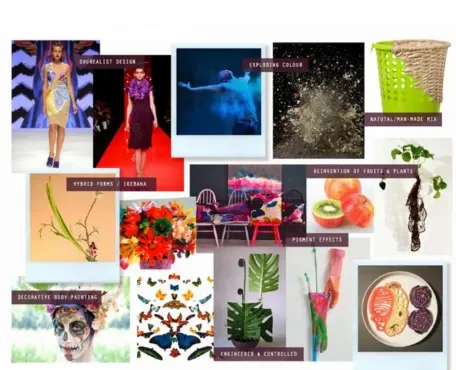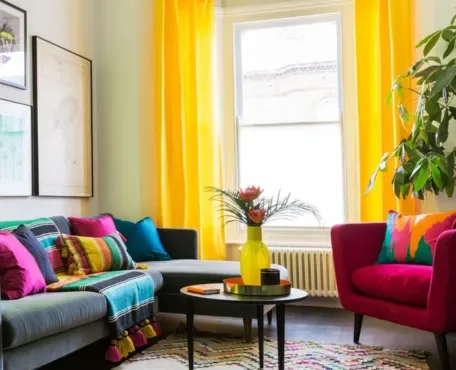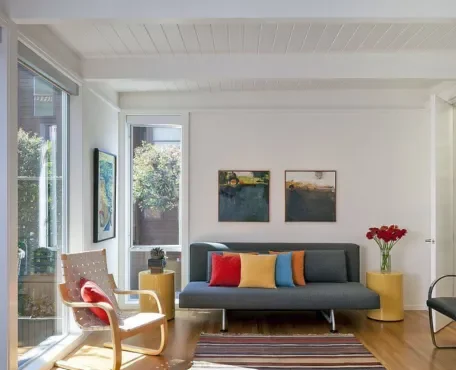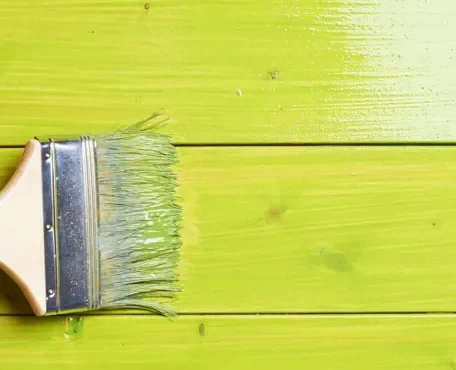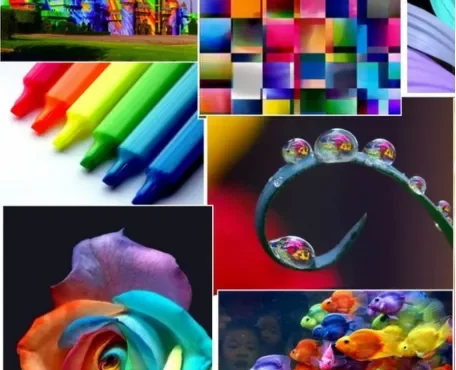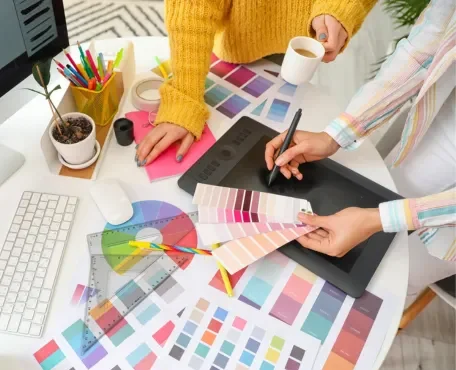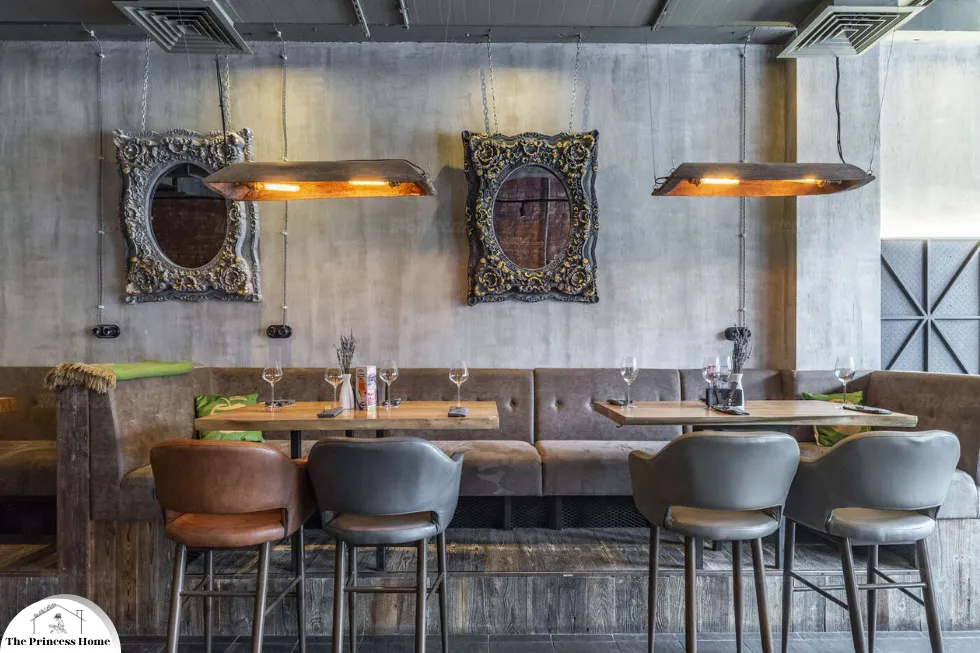
Color is one of the most influential elements in design, impacting the aesthetics and emotional resonance of a space. However, color isn’t solely about hue and shade; it encompasses a broad spectrum of applications that include finishes and textures. These elements can dramatically alter the perception of color and enhance the visual and tactile experience of any environment. In this article, we explore the multifaceted ways in which color can be incorporated through finishes and textures, offering insights into their application in interior design, architecture, and product design.
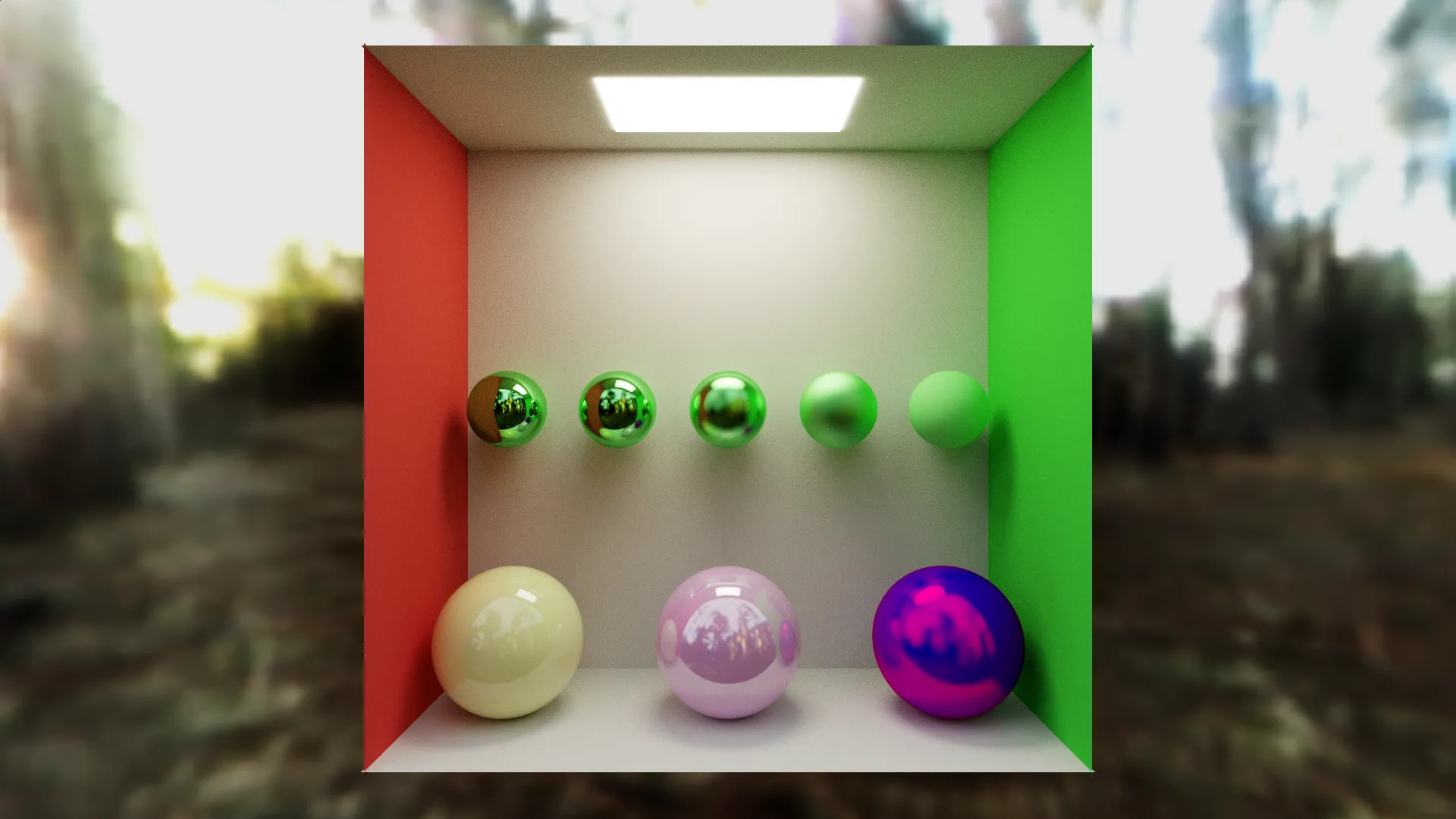
1.*Understanding Finishes &Textures
Finishes refer to the final treatment applied to surfaces, affecting their appearance and durability. They play a crucial role in the way color is perceived and experienced. Common types of finishes include:
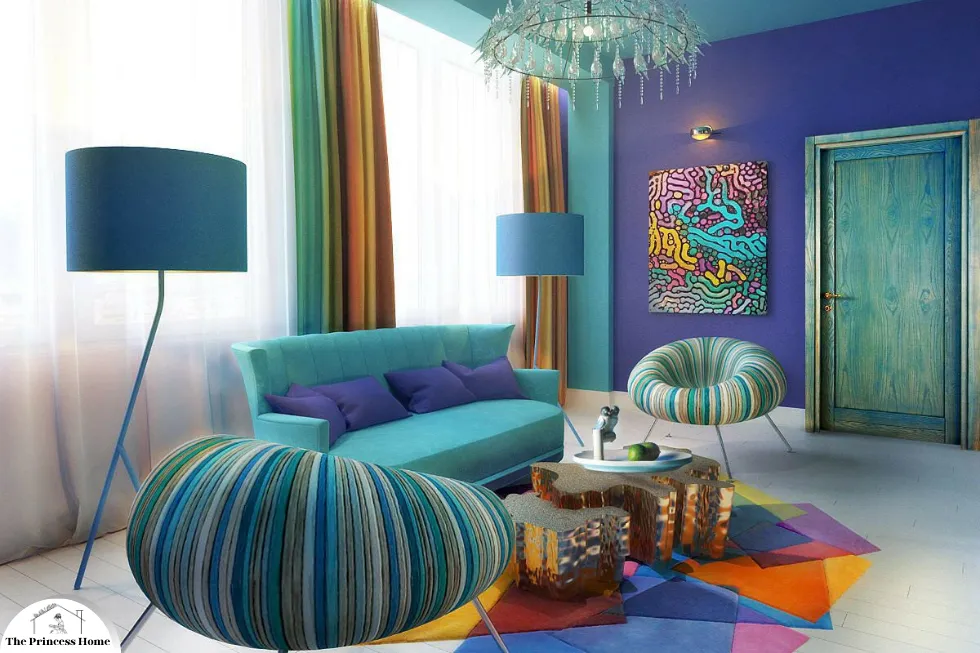
1.Matte Finish:
Non-reflective and subtle, matte finishes provide a muted and sophisticated look. They diffuse light and reduce glare, making them ideal for creating a calm and understated ambiance. Matte finishes are popular for several reasons:
1.Appearance: Matte finishes offer a smooth, even surface that does not reflect light, which can help create a sense of depth and richness in color. This makes them perfect for spaces where a relaxed and cozy atmosphere is desired.
2.Hiding Imperfections: Because they do not reflect light, matte finishes are excellent at concealing surface imperfections such as bumps, scratches, and other irregularities.
3.Low Maintenance: Matte surfaces are less likely to show fingerprints, smudges, and dirt, making them easier to maintain over time.
4.Versatility: They are suitable for a variety of applications, from walls and ceilings to furniture and decorative objects.
Matte finishes are often chosen for areas where a soft, elegant, and understated look is preferred, such as living rooms, bedrooms, and dining areas. They work well in both traditional and modern interiors, providing a timeless aesthetic that can adapt to different styles and trends.
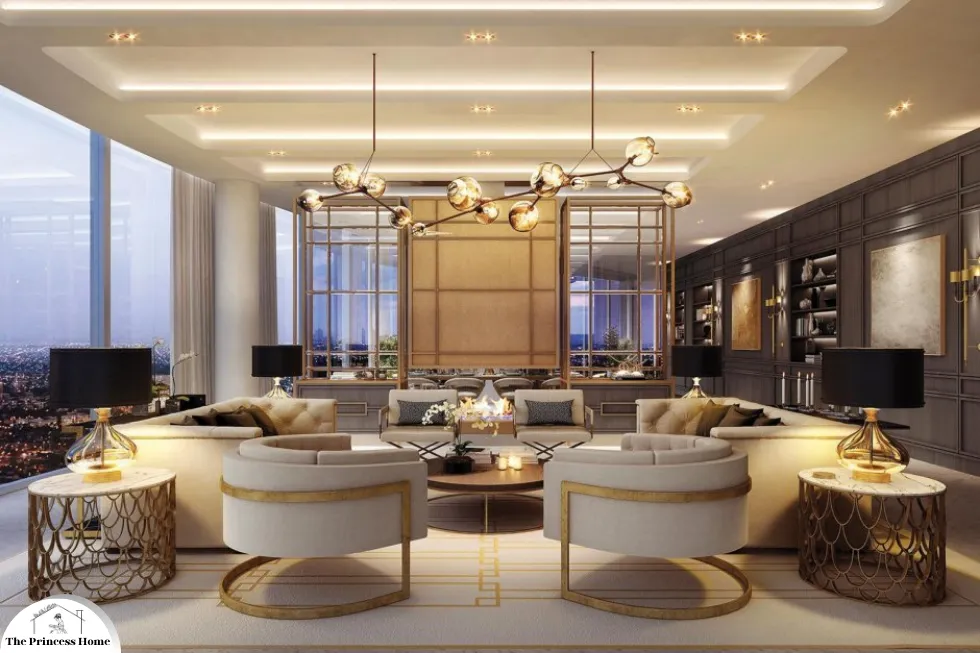
2.Glossy: Highly:
The most reflective of all finishes, high-gloss provides a mirror-like surface that amplifies color and light. It is highly durable and easy to clean but tends to show imperfections such as scratches and fingerprints more readily. High-gloss finishes are often used for a modern, dramatic effect in spaces like kitchens and bathrooms.
1.Appearance: The most reflective of all finishes, high-gloss surfaces create a vibrant, shiny look that enhances the depth and richness of colors. This makes them ideal for spaces where a bold, dramatic effect is desired.
2.Light Amplification: High-gloss finishes reflect a significant amount of light, making rooms appear brighter and more open. This reflective quality can also highlight architectural details and design elements.
3.Durability: These finishes are highly durable and resistant to moisture, making them suitable for high-use areas like kitchens and bathrooms. They can withstand frequent cleaning without losing their luster.
4.Easy to Clean: The smooth, non-porous surface of a high-gloss finish makes it easy to wipe clean, which is especially beneficial in areas prone to spills and splatters.
5.Visibility of Imperfections: One downside of high-gloss finishes is that they tend to show imperfections such as scratches, fingerprints, and smudges more readily. Regular maintenance is required to keep them looking pristine.
High-gloss finishes are often used for a modern, dramatic effect in spaces such as:
- Kitchens: On cabinets, backsplashes, and countertops to create a sleek, contemporary look.
- Bathrooms: On tiles, vanities, and other surfaces to enhance the sense of cleanliness and modernity.
- Accent Walls: To create a focal point that draws the eye and adds a touch of luxury.
Overall, high-gloss finishes are chosen for their ability to make a bold visual statement while providing practical benefits like durability and ease of maintenance.
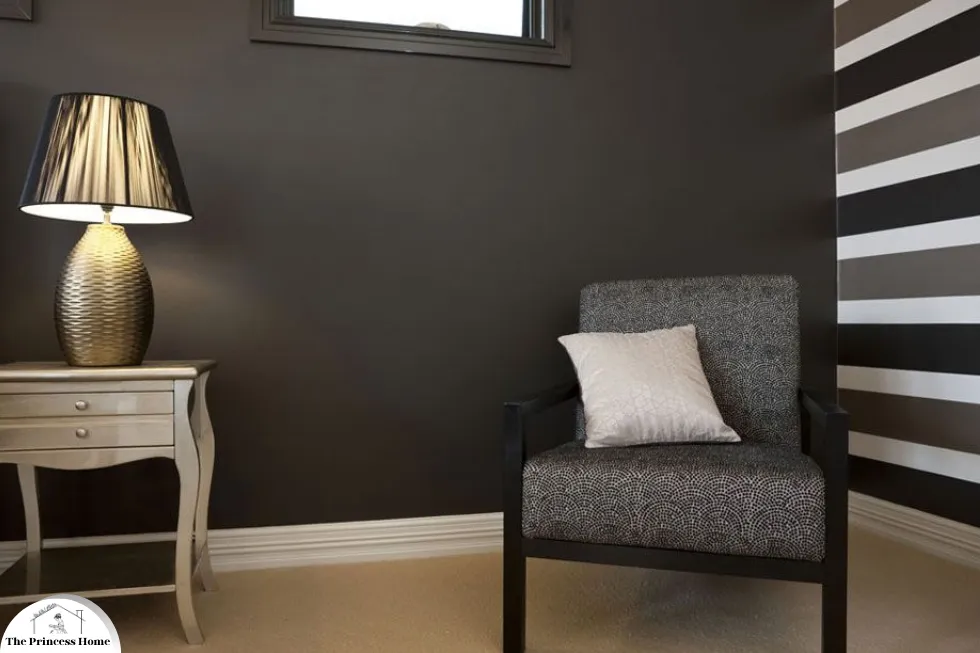
3.Satin Finish:
Satin finishes provide a balance between matte and glossy finishes, offering a soft sheen without being overly reflective. They are durable and easy to clean, making them suitable for high-traffic areas like kitchens and bathrooms. Satin enhance color depth while maintaining a smooth, elegant appearance.
Key characteristics of satin finishes include:
1.Appearance: Satin finishes have a smooth surface with a subtle, soft sheen. This gentle luster adds a touch of elegance and sophistication to any space without the harsh glare of high-gloss finishes.
2.Color Enhancement: The soft sheen of satin finishes enhances the depth and richness of colors, making them appear more vibrant and lively than matte finishes while still maintaining a more subdued look than high-gloss.
3.Durability: Satin finishes are highly durable and can withstand the wear and tear of everyday use. This makes them ideal for high-traffic areas where surfaces are frequently touched or bumped.
4.Ease of Cleaning: They are relatively easy to clean, resisting stains and fingerprints better than matte finishes. This practicality makes satin finishes a popular choice for areas prone to messes, such as kitchens and bathrooms.
5.Versatility: Satin finishes are versatile and can be used on a variety of surfaces, including walls, trim, doors, and furniture. They are particularly well-suited for rooms that require a balance of aesthetics and functionality.
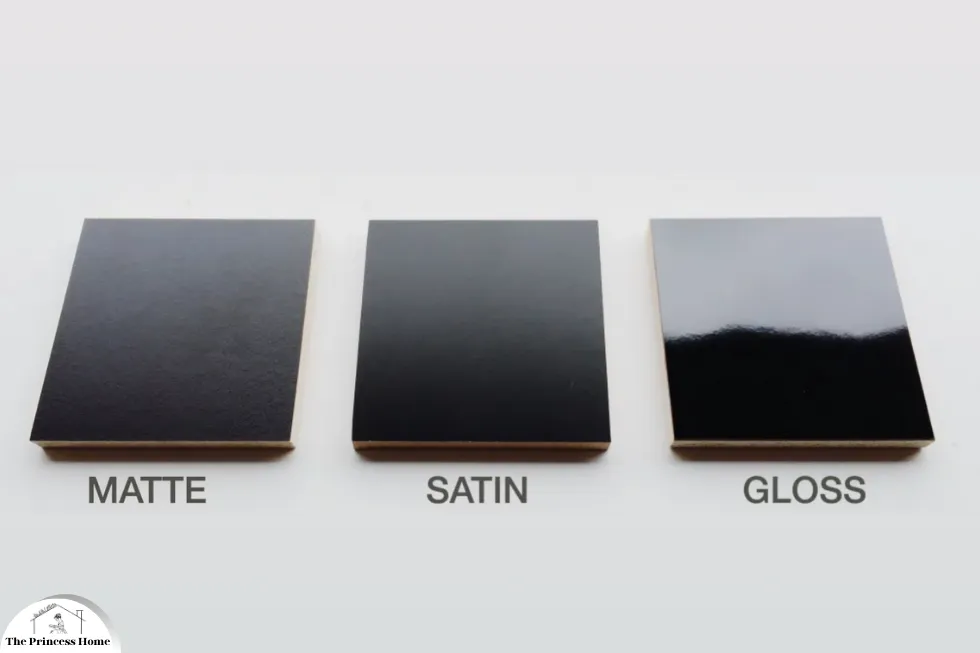
Satin finishes are often chosen for:
- Kitchens: On cabinets, walls, and trim, providing a durable and attractive finish that stands up to frequent cleaning.
- Bathrooms: On walls, vanities, and fixtures, offering a moisture-resistant surface that maintains a stylish appearance.
- Living Areas: On walls and woodwork in living rooms, dining rooms, and bedrooms, creating a warm and inviting ambiance with a hint of sophistication.
- Trim and Woodwork: On baseboards, crown molding, and other decorative elements, where a smooth, polished look is desired without the high shine of gloss finishes.
Overall, satin finishes strike a perfect balance, delivering both aesthetic appeal and practical benefits, making them a popular choice for a wide range of interior design applications.
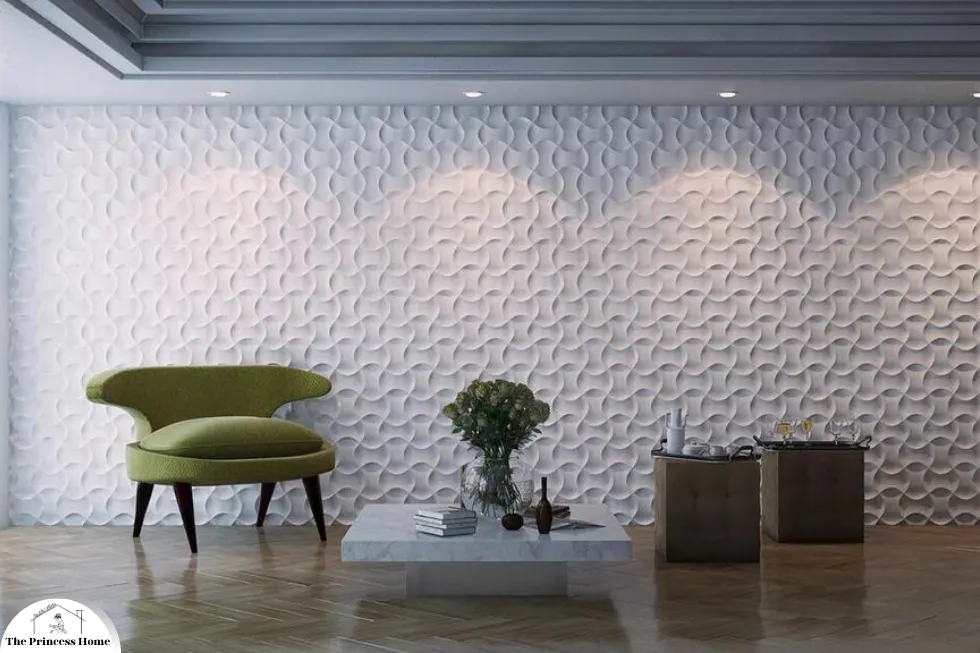
4.Textured Finish:
Textured finishes add depth and dimension to surfaces, creating a tactile and visually interesting effect. They can range from subtle textures that provide a gentle feel to more pronounced, dramatic textures that make a bold statement.
Key characteristics of textured finishes include:
1.Appearance: Textured finishes vary widely in their look and feel, from the soft, subtle texture of an eggshell finish to the rough, pronounced texture of stucco or brushed metal. This versatility allows for creative expression and customization in interior design.
2.Tactile Appeal: These finishes add a sensory element to surfaces, making them inviting to touch and enhancing the overall experience of a space. The tactile quality can evoke different moods and feelings, from cozy and warm to industrial and edgy.
3.Visual Interest: Textured finishes create visual interest by breaking up the uniformity of flat surfaces. They can add complexity and sophistication to a room, making walls, ceilings, and furniture pieces stand out.
4.Imperfection Camouflage: Textured finishes are excellent at concealing surface imperfections such as cracks, dents, or uneven areas. This makes them practical for older buildings or surfaces that are not perfectly smooth.
5.Light Interaction: Depending on the type of texture, these finishes can interact with light in unique ways, creating shadows and highlights that change throughout the day. This dynamic quality can add a sense of movement and life to a room.
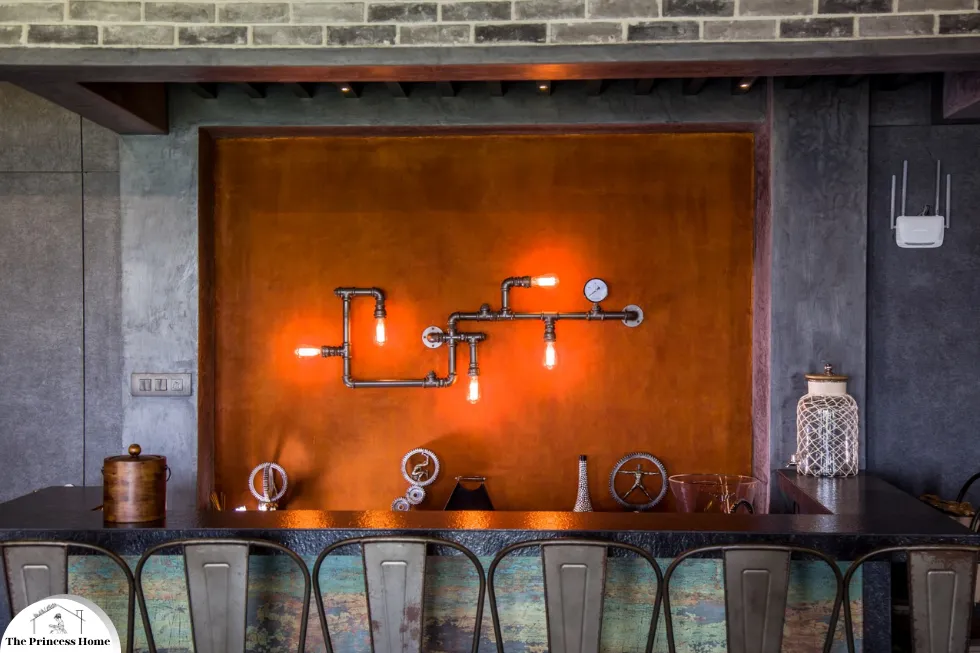
Textured finishes are often chosen for:
- Walls and Ceilings: To add character and depth to large, flat areas. Techniques like stucco, plaster, or textured paint can transform a plain wall into a feature element.
- Accent Walls: To create a focal point in a room. Textured accent walls draw the eye and can complement other design elements.
- Furniture: On surfaces like tabletops, cabinet doors, or decorative pieces, where texture can add a unique touch and enhance the overall design.
- Outdoor Spaces: For exterior walls, pathways, and garden features, where textures like stone, brick, or rough concrete can create a natural, rustic look.
Examples of textured finishes include:
- Eggshell Finish: A very subtle texture that provides a soft, velvety look with a slight sheen.
- Stucco: A rough, textured finish commonly used on exterior walls, providing a rustic, Mediterranean appearance.
- Brushed Metal: A linear texture applied to metal surfaces, giving them a sleek, industrial look.
- Knockdown Texture: A drywall finishing technique that creates a mottled, uneven surface, often used to add interest to ceilings and walls.
- Venetian Plaster: A smooth, polished plaster finish with a slightly textured, marble-like appearance, adding a touch of luxury to interiors.
Overall, textured finishes offer a range of possibilities for enhancing the aesthetic and functional qualities of a space, making them a versatile choice in interior and exterior design.
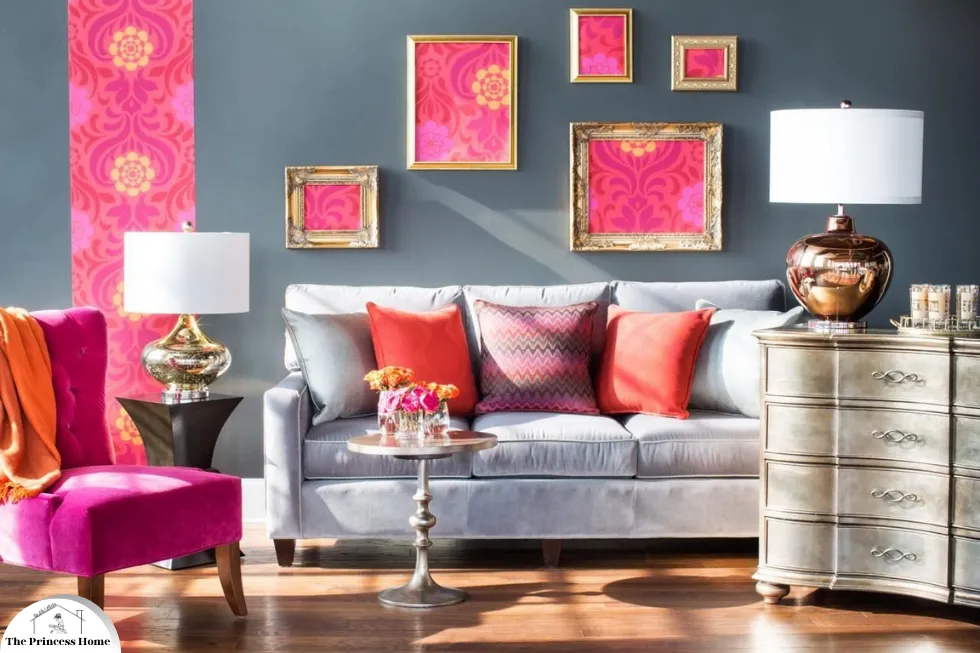
2.Textures
Textured finishes add a tactile quality to surfaces, creating visual interest and depth. They can range from subtle textures like stippling to more pronounced ones like sand or stone finishes. Textured finishes can hide surface imperfections and add character to walls and furniture, like patterned wallpapers and fabrics. Common textures include:
1.Smooth: Smooth textures create a sleek and clean appearance, allowing colors to stand out vividly. They are often associated with modern and minimalist designs.
2.Rough: Rough textures, such as exposed brick or coarse fabrics, add a rustic and tactile element to a space. They can evoke warmth and coziness, making colors appear more grounded and earthy.
3.Patterned: Patterns introduce complexity and rhythm to surfaces. Whether through geometric shapes, floral designs, or abstract motifs, patterned textures can break up monotony and add layers of interest.
4.3D Textures: Three-dimensional textures, like embossed wallpapers or textured tiles, provide a multi-sensory experience. They create shadows and highlights that change with the light, adding dynamism to the use of color.
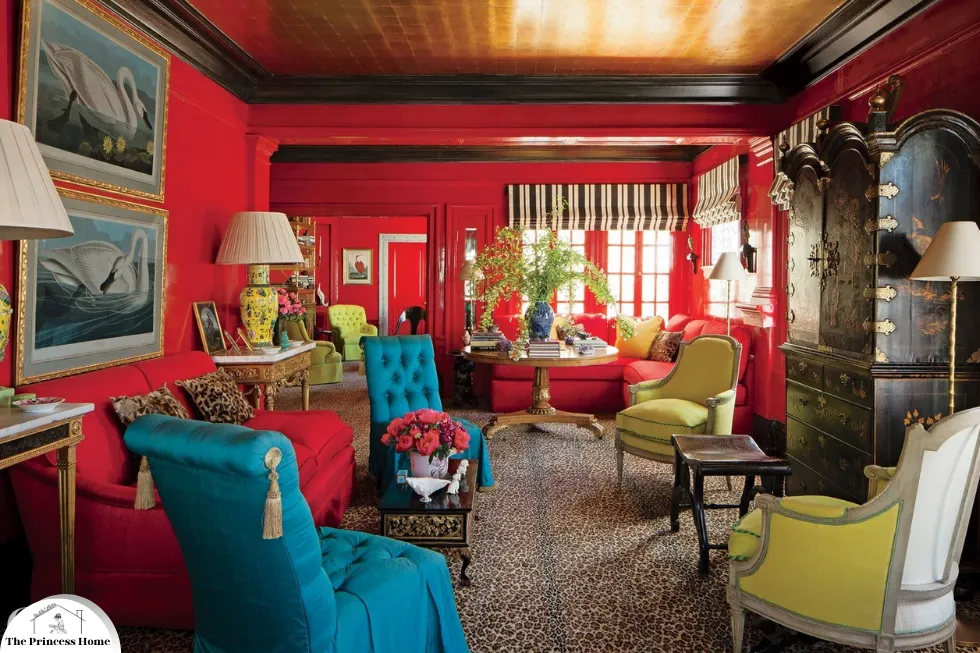
2.*The Interplay of Color, Finish, &Texture
1.Enhancing Color Perception
Finishes and textures can enhance or subdue the perception of color. For instance, a glossy red wall will appear more vibrant and bold compared to a matte red wall, which might come across as more muted and sophisticated. Similarly, a textured surface, like a blue velvet sofa, will offer a richer and more tactile experience of the color compared to a smooth, flat blue paint.
2.Creating Ambiance &Mood
The combination of color, finish, and texture can significantly influence the mood of a space. Warm colors with matte finishes can create a cozy and inviting atmosphere, while cool colors with glossy finishes can evoke a sense of calm and modernity. Textures like rough stone or wood can introduce a natural and rustic feel, while smooth, metallic finishes can create a sleek and contemporary ambiance.
3.Practical Applications in Interior Design
1.Walls and Ceilings: Using different finishes on walls and ceilings can delineate spaces and create focal points. For example, a feature wall with a high-gloss finish can draw attention and add depth, while matte finishes can provide a soothing backdrop.
2.Furniture and Fixtures: The choice of finishes and textures in furniture and fixtures can define the style of a room. A leather sofa with a rich texture can add luxury, while a matte metal table can contribute to a minimalist aesthetic.
3.Textiles and Accessories: Textiles such as rugs, curtains, and cushions offer an easy way to introduce textures and finishes into a space. Velvet cushions in rich hues can add opulence, while linen drapes can bring a casual, natural feel.
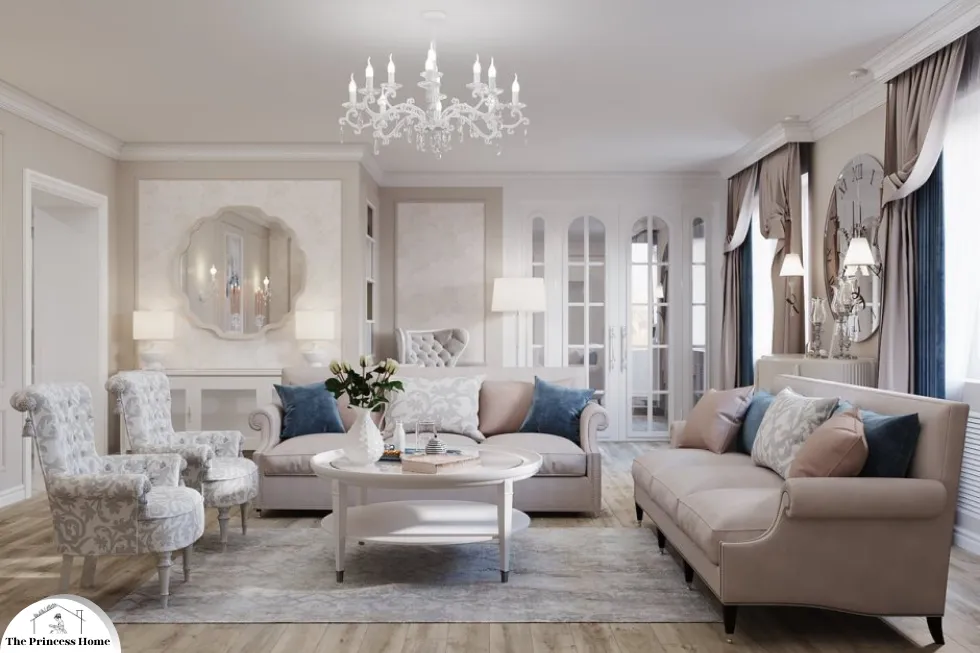
3.*Case Studies &Examples
1.Modern Living Room
In a modern living room, the designer used a palette of cool blues and greys with varying finishes and textures. The walls were painted in a matte slate grey, providing a calm and neutral backdrop. A glossy white coffee table added a touch of modernity and contrast. The sofa, upholstered in a textured blue fabric, introduced warmth and comfort. Metallic accents in the form of brushed steel lamps and a glass chandelier added sophistication and light reflection, balancing the matte and textured elements.
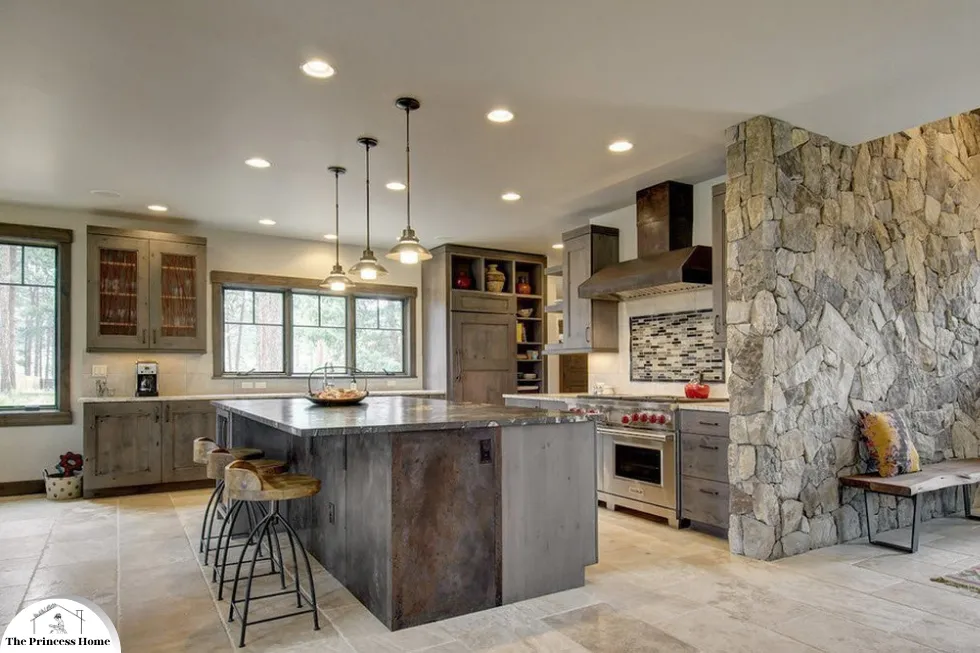
2.Rustic Kitchen
In a rustic kitchen, warm earthy tones were combined with rough and smooth textures. The walls featured a rough stucco finish in a warm beige, enhancing the rustic charm. The wooden cabinets were finished with a matte lacquer, allowing the natural grain to stand out. A copper sink with a hammered texture added a unique tactile element, while polished granite countertops provided a sleek and durable work surface.
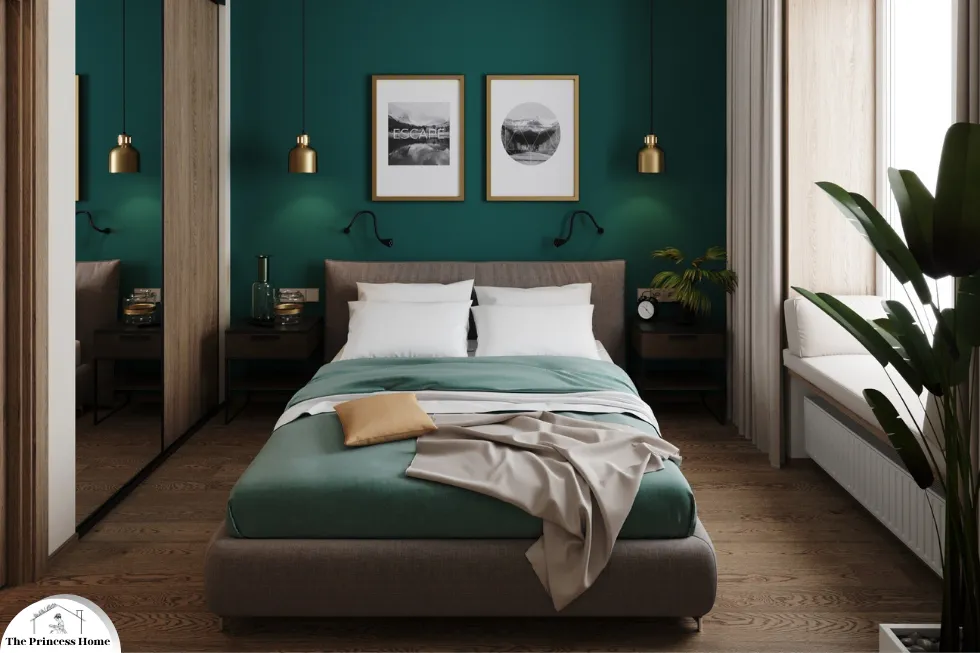
3.Luxurious Bedroom
A luxurious bedroom utilized rich colors and opulent textures. The walls were adorned with a deep emerald green satin finish, creating a serene yet vibrant atmosphere. The bed was dressed in silk sheets and velvet cushions, providing a tactile and visual richness. A plush, high-pile carpet in a complementary shade of green added comfort and a touch of luxury underfoot. Gold accents in the form of picture frames and lamp bases brought in a warm, reflective quality, enhancing the overall opulence.
Conclusion
Incorporating color through finishes and textures is a powerful tool in design, offering endless possibilities for creativity and expression.
Frequently Asked Questions (FAQs)
1. How do finishes affect the perception of color?
Finishes impact how light interacts with surfaces, which in turn affects the perception of color. Glossy finishes reflect more light, making colors appear more vibrant and intense. Matte finishes diffuse light, creating a softer, more subdued appearance. Satin finishes offer a balanced sheen that enhances color without overwhelming it. Textured finishes add depth and dimension, altering the way colors are perceived based on the play of light and shadow.
2. What are some practical tips for choosing the right finish for a room?
Consider the function and mood of the room when choosing a finish. For a calm and soothing environment, matte finishes are ideal. In spaces where you want to create energy and vibrancy, glossy finishes work well. Satin finishes are versatile and suitable for most settings. Textured finishes can add interest and are great for feature walls or areas where you want to introduce a tactile element. Always test samples in the actual space to see how they look in different lighting conditions.
3. How can textures enhance the design of a space?
Textures add visual interest and depth, making a space feel more dynamic and layered. They can evoke specific emotions; for example, rough textures like exposed brick create a rustic, cozy atmosphere, while smooth textures like polished marble evoke elegance and modernity. Textured fabrics and materials can also add warmth and comfort, contributing to the overall sensory experience of the room.
4. Can different finishes be combined in the same space?
Yes, combining different finishes can create contrast and balance, adding visual interest to a space. For instance, a room can have matte walls with glossy accents such as furniture or decorative pieces. Mixing finishes allows for a more nuanced and sophisticated design, preventing the space from looking flat or monotonous. It’s essential to ensure that the finishes complement each other and align with the overall design aesthetic.
5. What role do textures play in the perception of color in fabrics?
In fabrics, textures influence how colors appear and feel. Smooth fabrics like silk or satin reflect more light, making colors look brighter and more saturated. Textured fabrics like velvet or linen absorb more light, giving colors a richer, deeper appearance. The tactile quality of textured fabrics also adds to the sensory experience, making the color feel more luxurious or more rustic, depending on the texture.
6. How can I use textured finishes to create a focal point in a room?
Textured finishes can draw attention to specific areas, creating focal points in a room. For example, a textured feature wall behind a bed or sofa can become a striking centerpiece. Using materials like stone, brick, or patterned wallpaper can add dimension and interest. The key is to balance textured elements with smoother, simpler surroundings to ensure that the focal point stands out without overwhelming the space.
7. What are some common mistakes to avoid when incorporating finishes and textures?
Common mistakes include overusing textures, which can make a space feel cluttered and chaotic. Another mistake is not considering the room’s lighting; some finishes may look different under artificial versus natural light. It’s also crucial to maintain a cohesive design; mismatched finishes and textures can create a disjointed look. Always plan and test different combinations before finalizing the design.
8. How do finishes and textures affect maintenance and durability?
Different finishes and textures require varying levels of maintenance. Glossy finishes can show fingerprints and smudges more easily but are generally easier to clean. Matte finishes hide imperfections better but can be more challenging to clean without leaving streaks. Textured surfaces can trap dust and dirt, requiring more frequent cleaning. It’s important to choose finishes and textures that not only match your aesthetic preferences but also align with your lifestyle and maintenance capabilities.
9. Can textures be used effectively in small spaces?
Yes, textures can be very effective in small spaces when used judiciously. They can add depth and interest without overwhelming the space. For example, a textured accent wall or a few textured accessories can enhance the design without making the room feel cluttered. Smooth, light-reflective finishes can also help make small spaces feel larger and more open.
10. What are some trends in the use of finishes and textures in modern design?
Current trends include the use of mixed metals, combining matte and glossy finishes for contrast, and incorporating natural textures like wood, stone, and textiles to bring warmth and authenticity to spaces. There is also a growing interest in sustainable and eco-friendly finishes, as well as innovative materials like 3D-printed textures and biophilic designs that integrate natural elements into built environments.


